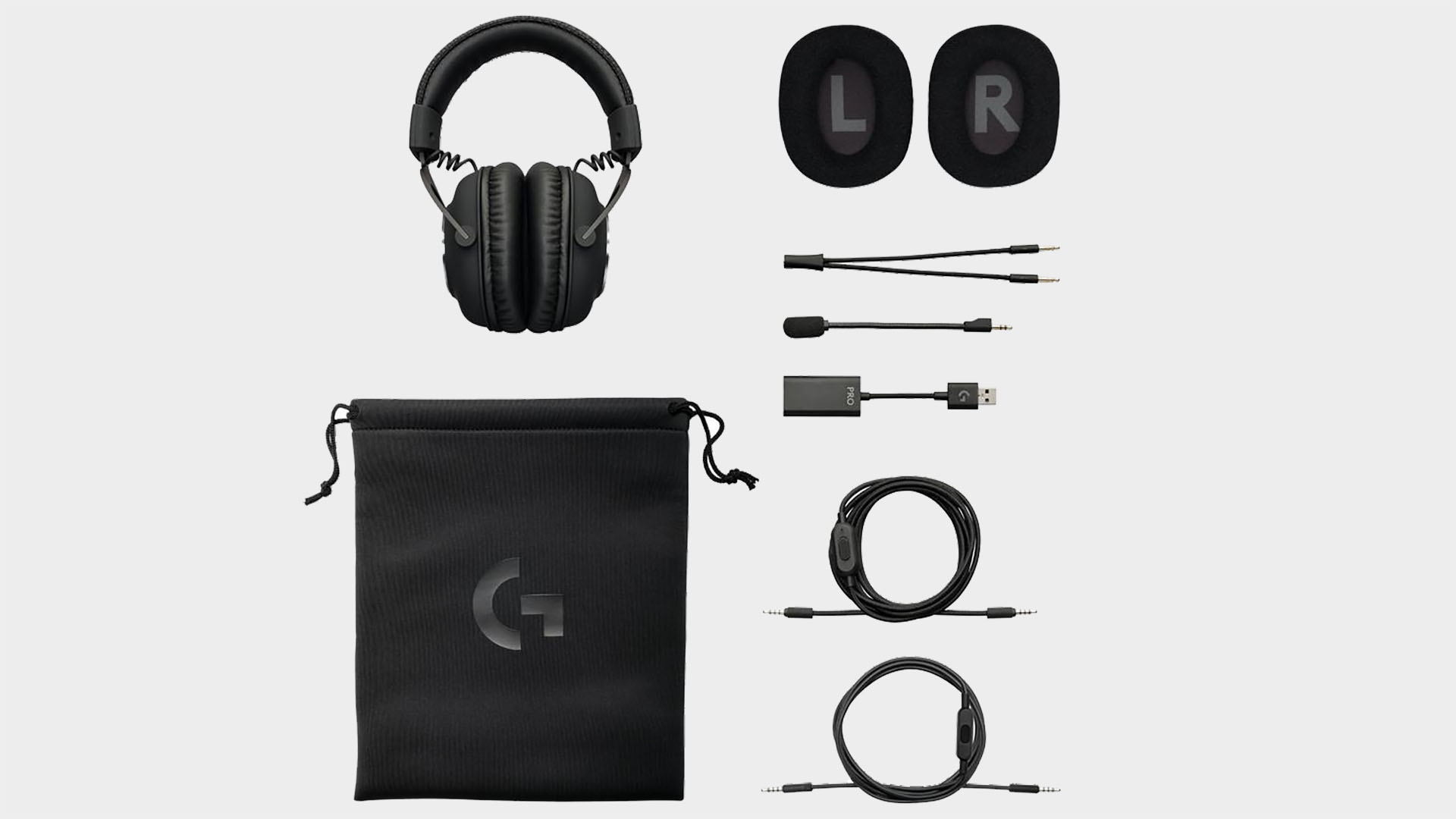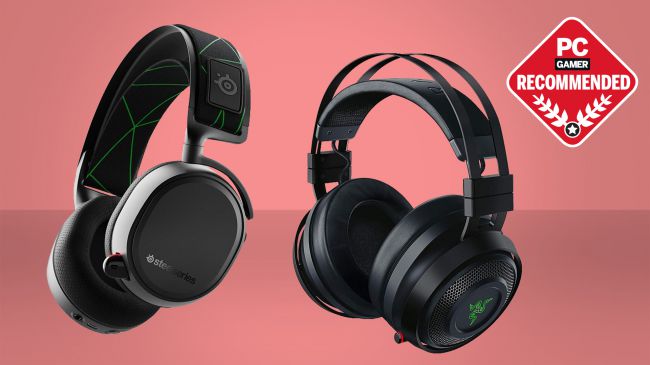Our Verdict
Few gaming headsets look and feel as great in-hand as the Logitech G Pro X gaming headset, but it also lacks presence and the included PC cable isn't great.
For
- Understated design
- USB DAC included
- Lots of accessories
Against
- Lacking audio profile
- Sharp microphone
- Scratchy braided cable
PC Gamer's got your back
You don't need to be a streamer or podcaster to appreciate quality microphone audio, and when it comes to competitive gaming few things are as important. That's why it's important to seek out the experts—and Logitech didn't spend $117m on Blue Microphones for nothing. The Logitech G Pro X gaming headset comes with Blue Vo!ce audio built-in, with it the hope that no syllable or smack will be lost between you and your teammates—but does it deliver? Not enough to be an unqualified recommendation, unfortunately.
Connection: Wired (3.5mm or USB with included DAC)
Driver: Hybrid mesh PRO-G 50mm
Frequency response: 20 - 20,000Hz
Impedance: 35 ohm
Microphone: 6mm detachable
Surround sound: DTS Headphone:X 2.0 via software
Weight: 320g
Accessories: 2x ear pads, Y splitter, 2m braided PC cable, mobile cable, carry pouch, USB DAC
Before we rush on into the in-game experience, let's start with what's included in the box. And it's a real treat, too. The Logitech G Pro X comes with a plethora of accessories that lay atop of a branded travel bag and an extra pair of ear pads. This includes plenty of cable options: a PC 3.5mm cable with inline controls, a mobile 3.5mm cable with button, a mic/headphone Y splitter, and a USB external DAC. All of which is up to the standard we've come to expect from the company.
Between the two sets of ear pads you have a choice of leatherette or cloth, both filled with memory foam to keep the headset cosy around the ears. They're a little fiddly to switch out—the process involves carefully slotting an elastic fabric into the plastic surrounding each ear cup—so you'll likely have to settle for one set and leave the others in the box. I prefer the leatherette option myself, as they make for somewhat greater sound isolation (although still far from the best), but they will likely be warmer over long periods than the breathable fabric on additional set.
Either way, you're looking at a snug and comfortable fit. The design of the Logitech Pro X is very similar to the HyperX Cloud Alpha (although that's where the similarities largely end) and it offers adjustable ear cup height and limited rotation for both left and right ear cups. The design proves comfortable enough during wear, and it's only once I attempted to place the headset around my neck that I was wishing for some form of 90° swivel in order to lay each ear cup flat against me. As it is, the design can be a little restrictive.
Comfort proves to be of little issue with the Pro X, at least. I wasn't tearing them off my ears after a long day clicking heads to nary a single Warzone win. They're light enough at 320g, too, and as a wired set you'll probably find you don't place them around your neck as often as you would wireless cans. Or at least that's my experience. I often tend to get up and move about more with my wireless headset, hence the lack of flexibility doesn't take as serious a toll on a wired set.
Onwards to the many cables included, and this is where the Pro X loses me a little. The cable intended for PC use (with inline mute and volume functionality) is braided, and I'm not entirely sure to what end the decision was made.

For one, braided cables are much louder than non-braided cables. Even the slightest bit of head movement will have the cable and inline controls scratching your clothes, the sound of which travels all the way up the cable and right into your eardrum. If that's not bad enough for a headset, due to the stiffness of the braided outer fabric, the cable also has a tendency to get tangled up in itself—you'll often have to unplug it and (gently) straighten it back out again to restore the full length.
It's a shame, too. The other cable included in the box isn't braided, but only offers a single button on its inline controls for mobiles, which is totally useless on PC. It's still a worthwhile swap in my opinion. The spare cable is far quieter than the intended PC cable, and if you've dedicated media keys on your keyboard you'll likely be reaching for those before your headset's inline controls anyways.
It does mean you won't be able to hardware mute the detachable boom mic, however. A Blue microphone takes centre stage with the Pro X, so it seems a little backwards to limit that functionality. But needs must.
As for the microphone, I wasn't quite as blown away by it as I was hoping to be. I'm a fan of Blue's lineup—I've been more than happy to recommend the Snowball and Yeti in the past—but the Blue Vo!ce functionality feels a little gimmicky, as does the name. The provided EQs, some of which are truly just for the laughs, do more to obscure my voice than make it much clearer.
What helps the Pro X deliver a little extra than the usual gaming headset is the inclusion of a USB DAC in the box.
Mic audio is far cleaner with only the default EQ in place. The microphone offers a lot of clarity, and I mean a lot. It's a very sharp profile, and I'm told it's not entirely pleasant to be on the receiving end of during an early morning meeting. It is, at least, very clear in-game—the piercing profile cuts right through the roar of gunfire and fighter jet flying overhead in a game of Call of Duty: Warzone.
You'll have no trouble with tracking audio in-game either, and there's enough definition through the 50mm drivers to place a footstep here or a bullet whizzing by there. They are some ways short of remarkable, however. That's not a complete put-down: the bass could be far more overpowering for a gaming device. But any tinkering in the backend has been a light touch with the Pro X and that's left the audio relatively balanced on the surface, if a little flat and lacking impact.

Which is the finest headset of them all? Check out our best gaming headset guide to find out.
What helps the Pro X deliver a little extra than the usual gaming headset is the inclusion of a USB DAC in the box. It's only little, and plugs right into a USB Type-A port, but it offers a ton of flexibility for PC, and console, connectivity.
The DAC also comes with onboard memory, on which can be stored an equaliser preset from within the Logitech G Hub app. There are plenty of presets to pick from, too, such as the preferred settings of OWL inaugural league MVP, Profit. Rather, I'm hooked on the ability to create my own bespoke EQ, which can then be saved right onto the DAC's onboard memory for use across any device I plug it into. Any 3.5mm headset will work, too.
The included DAC definitely does a lot to sweeten the Pro X pot. Yet with a price tag of $130 (£88), for a wired unit, I'm not sure it's enough added value to win me over. The Logitech G Pro X is built well and features a gorgeous understated design, no doubt about that, but the drivers don't deliver audio up to par with some of the cheaper gaming headsets we recommend, and the microphone doesn't quite live up to expectations, either—even with Blue's badge plastered all over it.
Few gaming headsets look and feel as great in-hand as the Logitech G Pro X gaming headset, but it also lacks presence and the included PC cable isn't great.

Jacob earned his first byline writing for his own tech blog. From there, he graduated to professionally breaking things as hardware writer at PCGamesN, and would go on to run the team as hardware editor. He joined PC Gamer's top staff as senior hardware editor before becoming managing editor of the hardware team, and you'll now find him reporting on the latest developments in the technology and gaming industries and testing the newest PC components.


